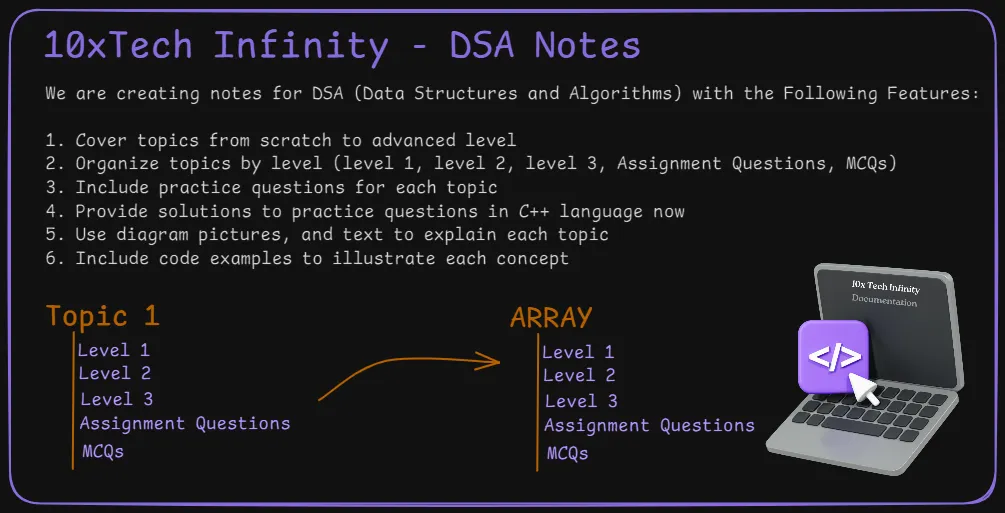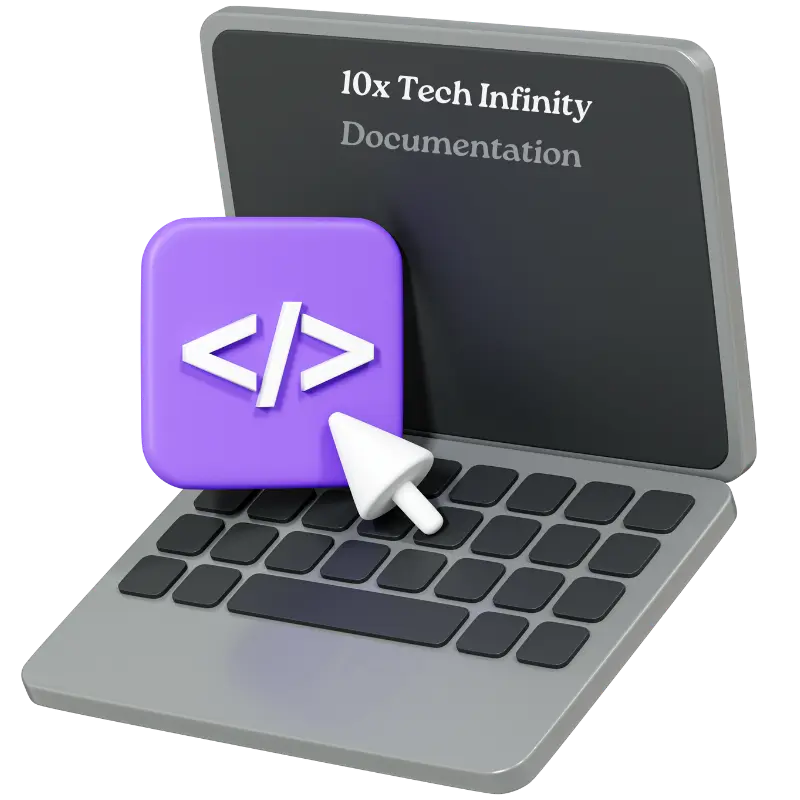How to Use Our DSA Documentation Notes Effectively
Welcome to our DSA (Data Structures and Algorithms) guides! These notes are made to help you learn DSA from the start to advanced levels. Here’s what you need to know:

What’s in Our DSA Notes?
- Topics from Basic to Advanced: We cover everything from simple ideas to hard ones.
- Organized by Levels: Topics are split into Level 1 (school), Level 2 (easy), and Level 3 (medium).
- Practice Questions: Each topic has questions for you to try.
- C++ Solutions: We give answers to practice questions in C++.
- Pictures and Diagrams: We use images to explain ideas better.
- Code Examples: We show real code to help you understand.
How to Use These Notes
- Start at Your Level: If you’re new, begin with Level 1. If you know some DSA, you can start at Level 2 or 3.
- Read and Practice: For each topic, read the notes and try the practice questions.
- Look at the Code: Study the C++ solutions to learn how to write good code.
- Use the Pictures: The diagrams can help you understand hard ideas.
- Do the Assignments: Try the assignment questions to test what you’ve learned.
- Take the MCQs: Multiple Choice Questions (MCQs) are great for quick review.
What’s in Each Topic?
Each topic in our DSA notes includes:
- Explanation: We describe the idea in simple words.
- How It Works: We show step-by-step how the algorithm or data structure works.
- Code: We give C++ code that you can try yourself.
- Time and Space Complexity: We explain how fast the algorithm is and how much memory it uses.
- When to Use It: We tell you when this algorithm or data structure is useful.
- Practice Problems: We give you questions to solve to improve your skills.
Why This Helps Your DSA Journey
- Complete Learning: You get everything you need in one place.
- Structured Approach: The level system helps you learn step by step.
- Hands-on Practice: Lots of questions help you get better at solving problems.
- Visual Learning: Diagrams make it easier to understand complex ideas.
- Real-world Code: C++ examples prepare you for actual coding.
- Self-Assessment: Assignments and MCQs let you check your progress.
Final Thoughts - How to Get Better At DSA
Want to get better at DSA? Here’s what you need to do:
Practice, Practice, Practice!
- Practice questions help you understand concepts better. You should try to solve as many problems as you can.
- Code examples are super helpful. Go through them to see how concepts are implemented in code.
- Diagrams are visual aids that can help you understand complex concepts easily. Use them to your advantage!
Review Regularly
- You should review your notes regularly to keep your learning.
- Try to solve all the problems, even if they seem difficult.
- Don’t be afraid to go back to earlier topics if you need a refresher.
Don’t Cheat Yourself
- Don’t cheat yourself. Practice and practice.
- Take your time, think about the problem, and try to write the code yourself.
- Try to dry run the code at least 2 to 5 different test cases to make sure you understand it before you write it.
Remember, the key to getting better at DSA is practice. Use these notes regularly, try all the problems, and don’t be afraid to go back to earlier topics if you need to. Happy learning!
